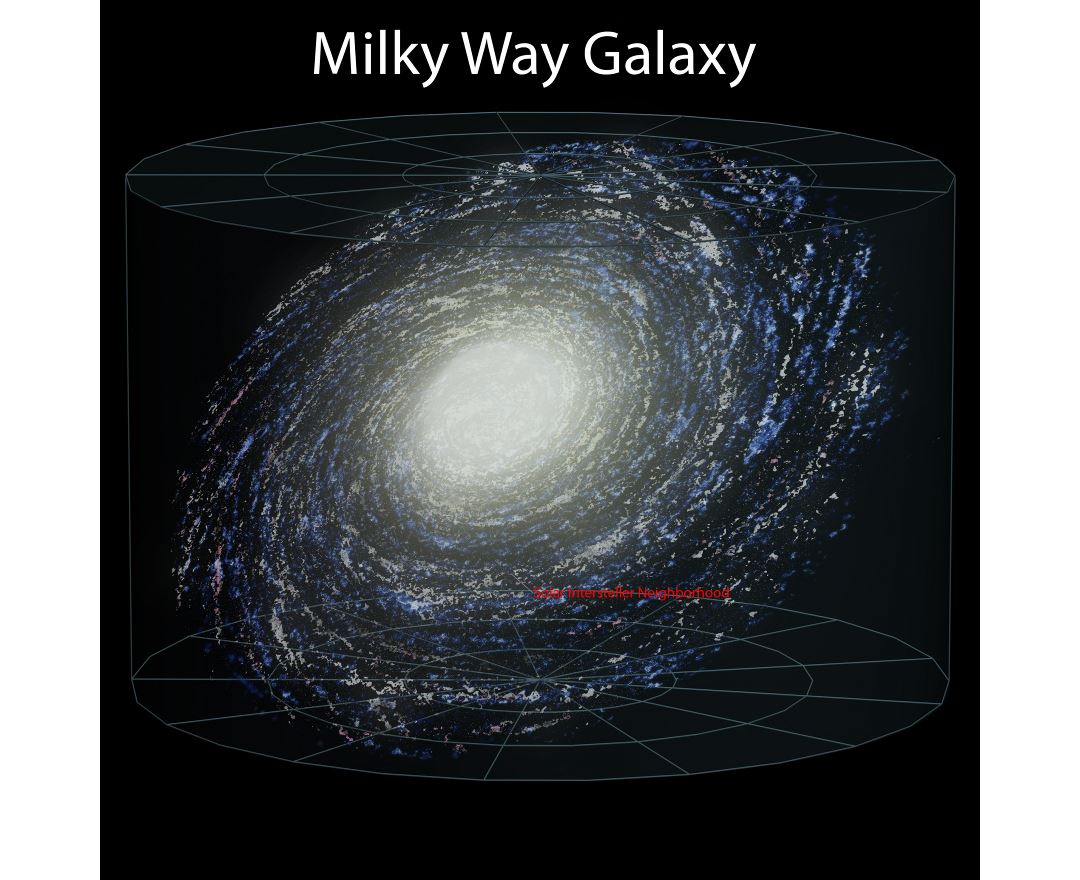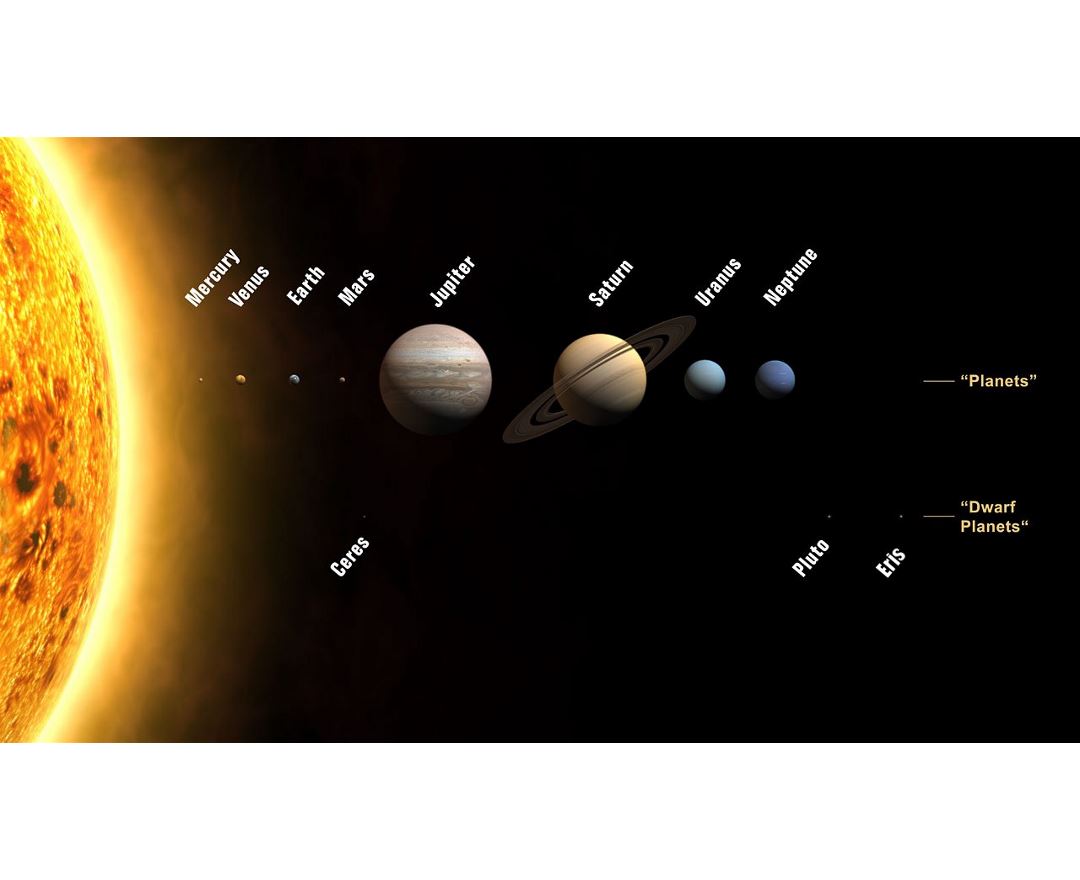Space
Universe
The Universe is all of time and space and its contents. It includes planets, moons, minor planets, stars, galaxies, the contents of intergalactic space, and all matter and energy. The size of the entire Universe is unknown.
The earliest scientific models of the Universe were developed by ancient Greek and Indian philosophers and were geocentric, placing the Earth at the center of the Universe. Over the centuries, more precise astronomical observations led Nicolaus Copernicus (1473–1543) to develop the heliocentric model with the Sun at the center of the Solar System. In developing the law of universal gravitation, Sir Isaac Newton (NS: 1643–1727) built upon Copernicus's work as well as observations by Tycho Brahe (1546–1601) and Johannes Kepler's (1571–1630) laws of planetary motion.
Further observational improvements led to the realization that our Solar System is located in the Milky Way galaxy, which is one of many galaxies in the Universe. It is assumed that galaxies are distributed uniformly and the same in all directions, meaning that the Universe has neither an edge nor a center. Discoveries in the early 20th century have suggested that the Universe had a beginning and that it is expanding at an increasing rate. The majority of mass in the Universe appears to exist in an unknown form called dark matter.
The Big Bang theory is the prevailing cosmological description of the development of the Universe. Under this theory, space and time emerged together 13.799±0.021 billion years ago with a fixed amount of energy and matter that has become less dense as the Universe has expanded. After the initial expansion, the Universe cooled, allowing the first subatomic particles to form and then simple atoms. Giant clouds later merged through gravity to form galaxies, stars, and everything else seen today.
There are many competing hypotheses about the ultimate fate of the Universe and about what, if anything, preceded the Big Bang, while other physicists and philosophers refuse to speculate, doubting that information about prior states will ever be accessible. Some physicists have suggested various multiverse hypotheses, in which the Universe might be one among many universes that likewise exist.
Milky Way
The Milky Way is the galaxy that contains our Solar System. The descriptive "milky" is derived from the appearance from Earth of the galaxy – a band of light seen in the night sky formed from stars that cannot be individually distinguished by the naked eye. The term "Milky Way" is a translation of the Latin via lactea, from the Greek. From Earth, the Milky Way appears as a band because its disk-shaped structure is viewed from within. Galileo Galilei first resolved the band of light into individual stars with his telescope in 1610. Until the early 1920s, most astronomers thought that the Milky Way contained all the stars in the Universe. Following the 1920 Great Debate between the astronomers Harlow Shapley and Heber Curtis, observations by Edwin Hubble showed that the Milky Way is just one of many galaxies.
The Milky Way is a barred spiral galaxy with a diameter between 100,000 light-years and 180,000 light-years. The Milky Way is estimated to contain 100–400 billion stars. There are likely at least 100 billion planets in the Milky Way. The Solar System is located within the disk, about 27,000 light-years from the Galactic Center, on the inner edge of one of the spiral-shaped concentrations of gas and dust called the Orion Arm. The stars in the inner ≈10,000 light-years form a bulge and one or more bars that radiate from the bulge. The very center is marked by an intense radio source, named Sagittarius A*, which is likely to be a supermassive black hole.
Stars and gases at a wide range of distances from the Galactic Center orbit at approximately 220 kilometers per second. The constant rotation speed contradicts the laws of Keplerian dynamics and suggests that much of the mass of the Milky Way does not emit or absorb electromagnetic radiation. This mass has been termed "dark matter". The rotational period is about 240 million years at the position of the Sun. The Milky Way as a whole is moving at a velocity of approximately 600 km per second with respect to extragalactic frames of reference. The oldest stars in the Milky Way are nearly as old as the Universe itself and thus likely formed shortly after the Dark Ages of the Big Bang.
The Milky Way has several satellite galaxies and is part of the Local Group of galaxies, which is a component of the Virgo Supercluster, which is itself a component of the Laniakea Supercluster.
Solar System
The Solar System is the gravitationally bound system comprising the Sun and the objects that orbit it, either directly or indirectly. Of those objects that orbit the Sun directly, the largest eight are the planets, with the remainder being significantly smaller objects, such as dwarf planets and small Solar System bodies. Of the objects that orbit the Sun indirectly, the moons, two are larger than the smallest planet, Mercury.
The Solar System formed 4.6 billion years ago from the gravitational collapse of a giant interstellar molecular cloud. The vast majority of the system's mass is in the Sun, with most of the remaining mass contained in Jupiter. The four smaller inner planets, Mercury, Venus, Earth and Mars, are terrestrial planets, being primarily composed of rock and metal. The four outer planets are giant planets, being substantially more massive than the terrestrials. The two largest, Jupiter and Saturn, are gas giants, being composed mainly of hydrogen and helium; the two outermost planets, Uranus and Neptune, are ice giants, being composed mostly of substances with relatively high melting points compared with hydrogen and helium, called volatiles, such as water, ammonia and methane. All planets have almost circular orbits that lie within a nearly flat disc called the ecliptic.
The Solar System also contains smaller objects. The asteroid belt, which lies between the orbits of Mars and Jupiter, mostly contains objects composed, like the terrestrial planets, of rock and metal. Beyond Neptune's orbit lie the Kuiper belt and scattered disc, which are populations of trans-Neptunian objects composed mostly of ices, and beyond them a newly discovered population of sednoids. Within these populations are several dozen to possibly tens of thousands of objects large enough that they have been rounded by their own gravity. Such objects are categorized as dwarf planets. Identified dwarf planets include the asteroid Ceres and the trans-Neptunian objects Pluto and Eris. In addition to these two regions, various other small-body populations, including comets, centaurs and interplanetary dust clouds, freely travel between regions. Six of the planets, at least four of the dwarf planets, and many of the smaller bodies are orbited by natural satellites, usually termed "moons" after the Moon. Each of the outer planets is encircled by planetary rings of dust and other small objects.
The solar wind, a stream of charged particles flowing outwards from the Sun, creates a bubble-like region in the interstellar medium known as the heliosphere. The heliopause is the point at which pressure from the solar wind is equal to the opposing pressure of the interstellar medium; it extends out to the edge of the scattered disc. The Oort cloud, which is thought to be the source for long-period comets, may also exist at a distance roughly a thousand times further than the heliosphere. The Solar System is located in the Orion Arm, 26,000 light-years from the center of the Milky Way.



